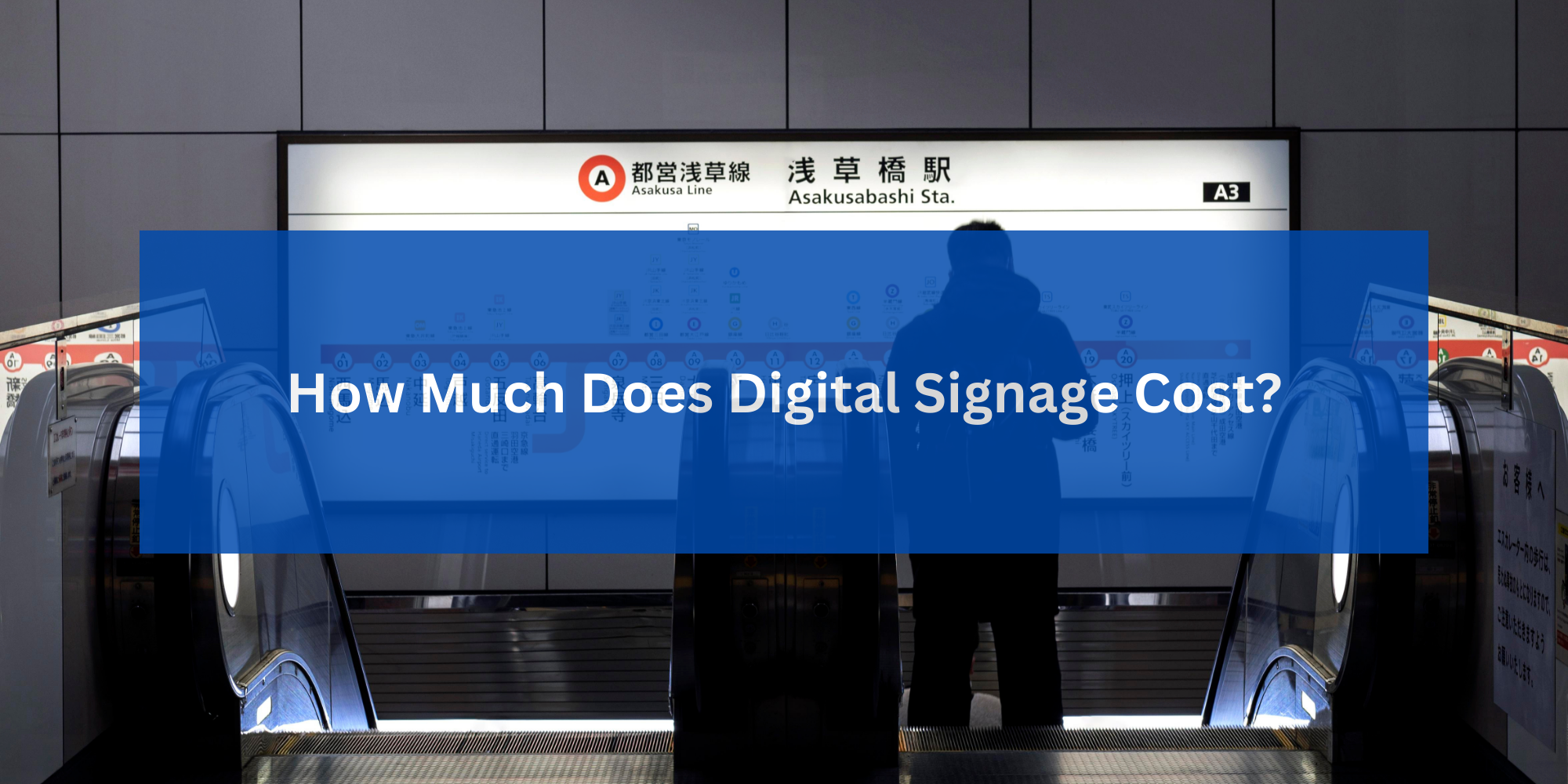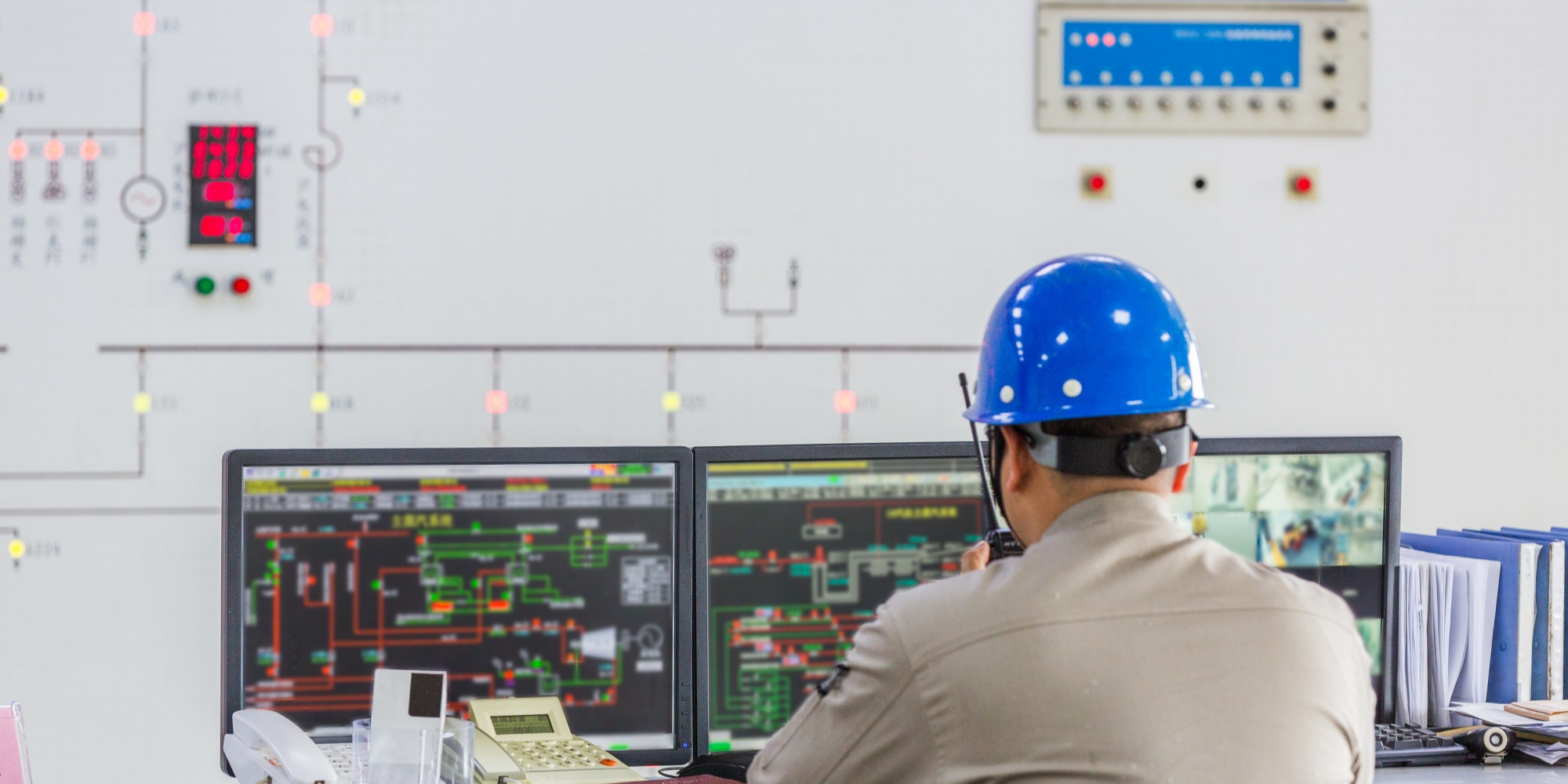
Digital signage software transforms how businesses communicate with their audience, enhancing brand promotion and customer engagement. With the global digital signage market projected to reach $45.94 billion by 2030, this technology is clearly more than a passing trend.
However, some businesses remain hesitant to adopt digital signage due to concerns about upfront costs. While the initial investment might seem significant, weighing these expenses against the long-term savings and potential return on investment (ROI) is essential. Let’s break down the costs associated with digital signage to help you plan your investment effectively.
Key Factors that Influence Digital Signage Costs
The total cost of a digital signage system depends on several components, including hardware, software, installation, and ongoing maintenance. Below, we’ll explore these elements and provide cost estimates to guide your decision-making.
Display Screen

The display screen is often the most expensive part of a digital signage system, but you have options to fit various budgets.
-
Commercial vs. Consumer Displays
Commercial-grade screens, built for durability and extended use, cost around $2,000. Alternatively, consumer-grade TVs, which can be repurposed for indoor digital signage, range from $500 to $1,500.-
Commercial displays are ideal for outdoor use and environments requiring high durability.
-
Consumer-grade TVs work well in smaller indoor spaces like classrooms or lobbies.
-
-
Screen Size and Type
Larger screens are pricier but may be necessary for visibility in spacious areas. Specialized displays, like touch screens or video walls, can range from $10,000 to $20,000 depending on complexity. Choose a screen size proportional to your space and content needs to balance cost and functionality.

Media Player
Media players power your digital signage by displaying content on your screens. Options range from budget-friendly to high-performance devices:
-
Popular Choices:
-
Fire OS: $30 - $80
-
Raspberry Pi: $35 - $160
-
Chrome OS: $150 - $700
-
Windows: $50 - $300
-
Android: $25 - $700
-
Important Notice
Rise Vision recommends the Amazon Signage Stick instead of Amazon Fire Stick or Fire TVs due to its affordability, performance, reliability, and built-in Mobile Device Management (MDM) capabilities. The MDM feature allows users to easily manage and control their displays remotely, ensuring device and application updates. The Amazon Signage Stick is purpose-built for digital signage and integrates directly with Rise Vision.
The Amazon Signage Stick is currently only available in the United States. You can purchase it here.
For alternative media player recommendations, please check out our hardware list here.
With the release of the new Amazon Signage Stick, Amazon Fire Sticks and Fire TVs should not be used for digital signage moving forward.
Mini PCs are an alternative for advanced setups. Depending on their capabilities, they cost between $100 and $1,400. Choose a player that matches your content complexity and performance requirements.
Cabling and Mounts
-
Cabling: HDMI cables cost around $13 for a 6-foot length, but wall installations for hidden wiring can add to your budget.
-
Mounts: Prices vary by type, with commercial mounts costing over $200 and consumer mounts ranging from $50 to $150. Select mounts that suit your display’s placement and angle.
You can also opt to substitute a media player for a mini PC, depending on the setup of your digital sign. Keep in mind that this will be more expensive, but will support more complex and advanced applications. Mini PCs cost around $100 for basic models to $1,400 for powerful units.

Installation
Installation costs depend on the complexity and scale of your digital signage setup:
-
Small setups (1-2 screens): $200+
-
Extensive, complex integrations: $2,000 - $10,000
Get multiple quotes from installers to find the best value for your project.
Software & Licensing
Digital signage software enables you to manage and optimize content effectively.
-
Cloud-Based Software (SaaS): Subscription-based options start at $7 per monthly screen. These platforms handle backend maintenance and updates.
-
Features to Consider include scheduling tools, templates, and security features. Ensure the software is scalable and contains reliable customer support.
Content Creation

Content costs vary widely based on complexity:
-
Essential Content: Static images and graphics are cost-effective.
-
Advanced Content: Interactive and video-based content requires skilled professionals like graphic designers or video editors.
Some software platforms include built-in templates that may not align with your branding needs.
IT Support & Maintenance Personnel
Regular maintenance and troubleshooting are essential to keep your digital signage running smoothly:
-
Provisioning: Configuring hardware for signage costs $250 - $350 per display. Android devices often support simpler provisioning.
-
Ongoing Support: IT support costs depend on the scale and complexity of your system. Routine maintenance ensures long-term reliability.
Provisioning
One area that’s technical enough to warrant the help of an IT professional is provisioning, which is the process of connecting and configuring your hardware to use for digital signage.
Provisioning your digital sign requires technical knowledge of internet connectivity and device networking. If you don’t have an in-house IT team to handle this task, you may need to outsource it, costing you roughly $250 - $350 per display.
If you’re using Android digital signage, you might be able to save on provisioning costs. These devices support easy USB provisioning, which you can do yourself.
Integration
You’ll also need to integrate all the required components into your digital signage system, which can be complex and time-consuming.
While you can do this yourself with easy-to-integrate software solutions, we recommend outsourcing the process to expert IT staff to avoid more costly problems in the long run.
Software Onboarding

Most digital signage software is designed to be easy to use, even without IT experience. But then again, if it’s your business’s first endeavor with digital signs, learning how to use and operate the software will be a learning curve.
That said, onboarding and training your staff to use digital signage software should be an expense that you are prepared for.
Troubleshooting and Maintenance
Digital signage systems are not bulletproof. You’ll likely encounter a technical issue, whether software or hardware-related.
You want an IT team on standby to troubleshoot issues quickly and conduct routine maintenance to keep the system functioning correctly.
The cost of IT support will depend on the scale of your network and the scope of their responsibilities.
Life Cycle
When calculating digital signage, you must also account for its life cycle. An essential digital sign will last five years before the hardware degrades, so you’ll eventually need to pay for repairs, replacements, or upgrades.
Commercial-grade digital signage may last longer because they’re made to withstand rigorous use and extreme conditions.
Hidden Costs
When budgeting for digital signage, account for additional expenses such as:
-
Graphic design and video production
-
Licensing fees for photos or software-supported content
-
Hardware repairs or upgrades after 5+ years
Free digital signage software may seem appealing but often lacks essential features and support, potentially increasing costs later.
Is Digital Signage Worth the Price?
Digital signage offers unmatched flexibility and impact for businesses aiming to enhance communication and engagement. For industries like manufacturing, integrating digital signage with manufacturing dashboard software can take efficiency to the next level. By displaying real-time KPIs, production metrics, and performance data, businesses can streamline operations, ensure transparency, and quickly address bottlenecks. Whether it's monitoring machine output, tracking inventory levels, or improving workplace safety, this combination enhances decision-making and keeps teams informed at a glance.
Rise Vision’s Hardware as a Service combines hardware and software into scalable subscriptions, reducing initial costs and simplifying management. With comprehensive support and a 14-day free digital signage software trial, Rise Vision helps businesses test and implement digital signage confidently.
Sign up today to explore how digital signage can elevate your business communication strategy.





